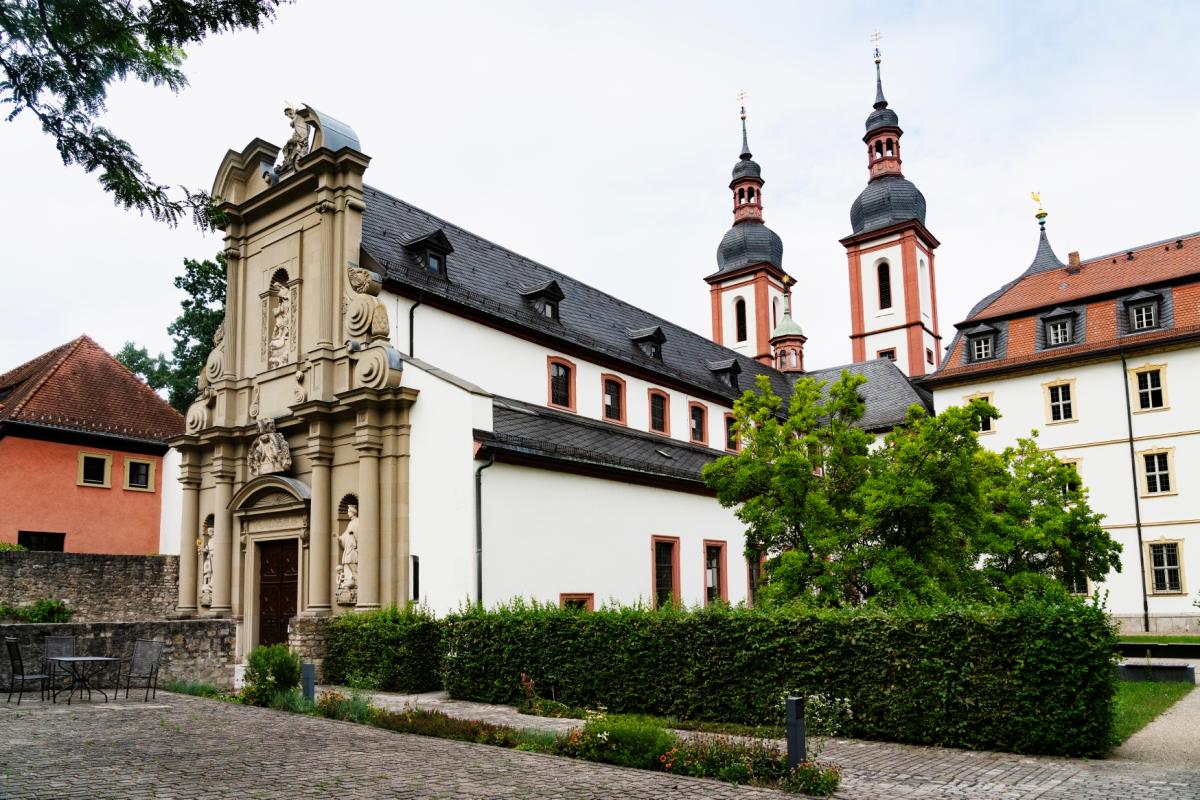By Anja Keul, Bavaria Travel
As you plan for the year ahead, do you just want to unwind, become quiet, reflect on your own desires, dreams and breaks in life? The Oberzell Monastery near Würzburg is a great place for that.
Out and Amen
Regina Postner has become accustomed to the fact that a lot of tears are shed in her job. And also to the fact that many energetic and dynamic self-optimisation plans quickly evaporate behind the walls of her monastery in the community of Zell am Main.

For example, when she sends the new “time-out” guests for a walk or suggests that they simply get a good night’s sleep. “Most of them come to us very tense and want to get involved somehow, help in the monastery garden or do something else.
But it is so important to calm down first and to allow emotions such as anger or sadness. Only when the mouth is silent does the heart speak!”
Conversations at the fountain
When the heart speaks, Regina Postner listens well. On request, she meets with each time-out guest once a day for a talk, gladly at the splashing fountain in front of Haus Klara, the monastery’s own education centre. The resolutely committed theologian, who even has a PhD, worked as a pastoral counsellor for 20 years and sees herself as a source of inspiration. She asks questions, provides suggestions, often with reference to the Bible.
Guidance in times of crisis
Since autumn 2018, the director of the Bildungshaus has been offering this “time out in the monastery”. On average, the guests stay for five days, each stay is arranged individually in advance by phone or email, an additional donation for the talks is requested.
Normally, the time-out guests stay in wonderfully nostalgic rooms with private bathrooms in the convent building, but during the Covid-19 period they are accommodated in the stylishly simple rooms of Haus Klara for the protection of the older sisters.
The pandemic also brought about a significant change in the guest structure. While women previously outnumbered men by two-thirds, far more men sought inspiration and orientation in the monastery during the crisis, says Regina Postner.
Students working on their master’s or doctoral theses have also discovered the Oberzell monastery, which is close to the city but lives completely according to its own rhythm.
Social commitment beyond the monastery
Sister Rut, a member of the order’s leadership and responsible for the motherhouse convent with thirty elderly sisters, explains the daily life of the hundred or so Franciscan nuns in Oberzell.
“To be there for people, that is our mission”
Following the tradition of their founder Antonia Werr, who established the Oberzell community in 1855 as a congregation within the Catholic Church and the Franciscan religious family, the sisters are committed to helping disadvantaged women and girls in many ways.
Outside the convent, the community maintains social institutions such as the Antonia Werr Centre, a large curative-therapeutic girls’ home, as well as a variety of services for women in crisis situations. “To be there for people, that is our mission,” says Sister Ruth. That is why the younger sisters go about their work as doctors, nurses, social workers, environmental engineers or educators in civilian clothes.
From baroque convent to factory and back

Founded as a men’s monastery near the Main River in 1128, the ensemble reached its prime in the 18th century when Würzburg’s master architect Balthasar Neumann created the new Baroque building. After all Bavarian monasteries were dissolved in 1803 in the course of secularisation, the church served as a warehouse for a factory, and other buildings had to serve as production facilities.
At the turn of the 19th and 20th centuries, the community succeeded in buying back the monastery in Zell am Main and, at considerable expense, “transformed it into a spiritual place again”, says Sister Ruth. As in Antonia Werr’s time, women’s issues played a major role. Dr Katharina Ganz, the Superior General elected by the sisters, actively campaigns for equal rights for women in the Catholic Church and for admission to the ordained ministry.
Unwinding at the organ
The sisters treat each other with love and mutual respect. Here, each one is not just a “cog in the wheel”, but is seen fully as an individual and is happy to take on tasks as far as she can, even into old age. Sister Linhildis, for example, who is over 80 years old, takes great pleasure in decorating the flowers in the baroque refectory, the sisters’ dining room.
Apart from meals, the sisters meet three times a day at prayer times, the Horen. The time-out guests are welcome to take part and experience these spiritual highlights of the monastery’s everyday life, for example at Vespers, the evening prayer, or at the Eucharist celebration in the beautifully restored monastery church.
When she has time, young Sister Juliana, who works in a Würzburg communal accommodation for asylum seekers, sits at the organ in the monastery church of St. Michael.
Monastery garden and Way of St James
In the evening, some sisters like to pray in the silence of the monastery garden. This fragrant retreat with its countless medicinal plants and large herb garden is also a favourite place for guests to do a little gardening.
A saying on a slate near a majestic mullein might motivate them particularly to make good use of the monastery time-out. “Do good to your soul, that it may desire to live in you!”
There is also plenty of opportunity to do good for the body. Würzburg, just a few kilometres from Zell am Main, is the intersection of the Franconian-Swabian Way of St. James and the Lower Franconian Way of St. James. In the old bishop’s town, time-out guests should of course also visit the Residenz, Balthasar Neumann’s monumental masterpiece. In the tranquillity of the Oberzell Monastery, they will then be able to recognise many details of the master’s hand.




